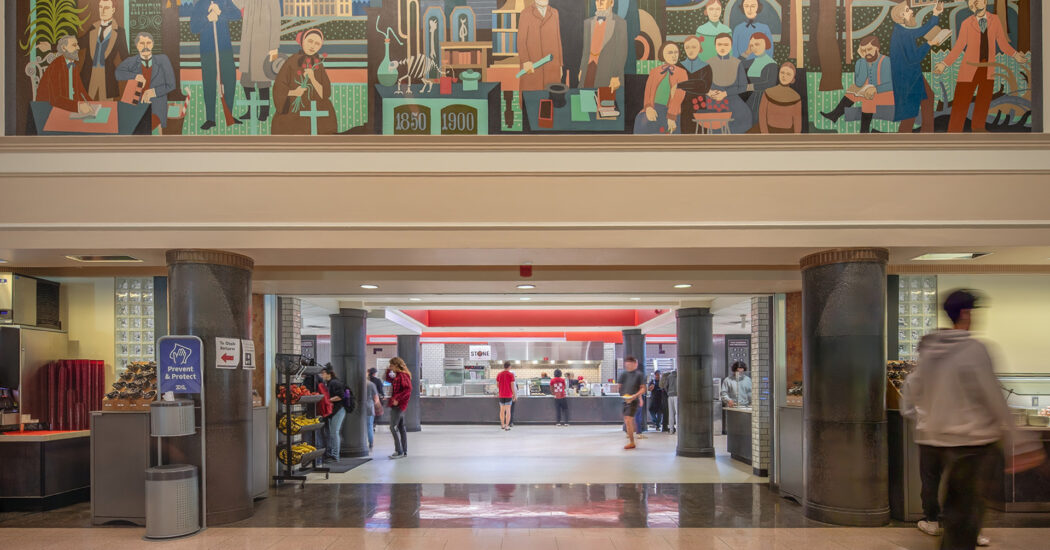“I Blame the Schools!”
-
Category
Studio-K12, Innovation -
Posted By
Tom Neff -
Posted On
Sep 06, 2016
With Schmidt Associates’ 40th birthday just celebrated, we thought it would be interesting to explore some of the ways in which the challenges and expectations of our clients and their stakeholders have evolved over the last four decades. This month, we’re publishing four spots on what “40 years on” have meant for the team in our K-12 Studio.
In the third of our blog posts on key issues in the world of K-12 and its evolving built environment, Tom Neff, a Principal of Schmidt Associates, takes a sideways look at our society’s evolving expectations from our K-12 institutions and the students they educate.
40 years ago, the education success equation was still very often defined as [good teachers + diligent students x time spent in the classroom = success]. Today, we recognize the critical role of another factor – the school environment – in the achieving of all kinds of success measures, from examination results to improved socialization and “presenteeism”.
Even more fundamental, good environment is central to good education at its most profound level. Education, derived from a Latin root meaning “to draw out” should be about drawing out the individual essence of each student. It should be about inspiration and looking outward. So an education environment that is restricted and limiting is counter-intuitive at best and, at worst, potentially fatal to the very purpose of education.
Today, rightly, our society expects our schools to produce rounded individuals who, in addition to making their own mark on the world, can collaborate and cooperate for the wider benefit. With such high expectations however comes a pressing need for all students to have access to the kind of education environment that equips them to step up to the plate. In practice, this means access to information and other specialized technologies that allow preparation for the challenges of further study and a productive working life. It means access to collaborative activities that foster and enable individual talent in the context of team contribution. And it means access to environments where students are able to hone their skills of positive interaction with their fellow “school citizens”.
Of course in a climate of ever increasing pressure on resources, it is right to question how those resources are applied. We all know somebody – we may even be that somebody – who claims they learned calculus in a freezing classroom with 40 other students and a teacher armed only with a piece of chalk and a blackboard. Or that they were part of the best ever high school staging of Julius Caesar, with homemade costumes and bicycle lamps as spotlights. Or even that they set still unbroken state athletics records running on a cinder track in hobnail boots. And while all these rose tinted recollections may be a tad unreliable, there is more than a grain of truth in the assertion that facilities alone will not create a great learning ethos. BUT…
What has been confirmed over and over is that a great learning ethos stands a great deal more chance of emerging and thriving in a great learning environment. In the last four decades, it has been our considerable privilege in the K-12 Studio Team at Schmidt Associates to witness the absolute pride of place that students register when they move into a new or newly renovated school. This is much more than a “nice to have” and it is certainly not an indulgence. Pride of place and pride of belonging are two of the great drivers of a sense of emerging pride of citizenship and social role that molds great kids into great adults. And pride derives in no small part from environment.
On a complementary but more immediate level, there are also very good reasons for the closest possible alignment between the quality of the school environment and the later worlds of university study and work. 40 years ago, many of the did not offer our young people a worthwhile future like they do today. So our school environment has to keep pace with developments in technology, if it is to fulfill its function of equipping students for their future. 40 years ago, work was considerably less collaborative than it is today, focusing to a far greater degree on the individual’s position in a hierarchy. In contrast, today’s skills matrix and project-based environments demand social skills to support purely technical abilities. If you want to get on, you need to learn to get on with others. And that is learned in no small part at school, where a chance to play your part in a sophisticated auditorium production of Julius Caesar is both the experience of a lifetime and experience for the life to come.
Today, our schools are doing some incredible work. And they are gifting our society with some remarkable students. That these students have growing access to excellent facilities and splendid environments is not coincidental with their achievements, or even complementary to them. It is causal. And it should be causing us all to say: “I give the schools full credit”.







